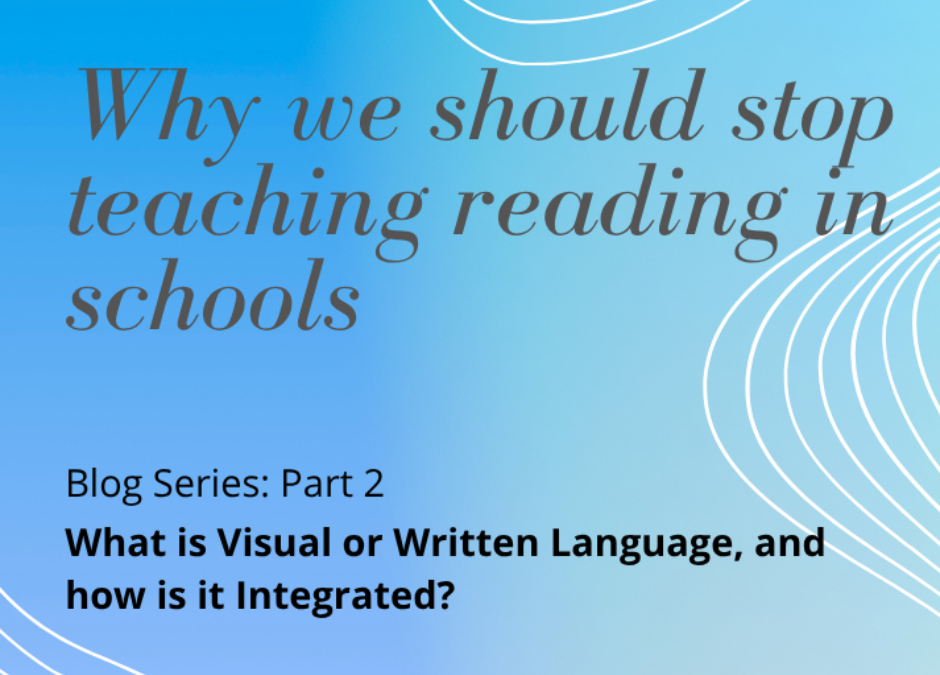
Blog Series: Why We should STOP teaching reading in schools
Part 2: What is Visual or Written Language, and how is it INTEGRATED?
This blog series explores the development of Written Language: reading, spelling, and writing as a natural extension from oral language to visual language. This blog series describes what reading IS – the integration of visual language (letters) into already-existing oral language processing systems (sounds, words, and vocabulary). From this already-intact oral vocabulary, the WRITTEN or VISUAL form of a word gets integrated into the already established neural pathways that exist for the spoken word. As you encounter the visual form of a word – seeing it represented in letters, and typically in context, the SEQUENCE or order of letters from left-to-right get “mapped” onto the brain cells that exist in the stored representation of the word. The sequence of letters from left-to-right that exist in SPACE get mapped against the sequence of spoken sounds from first-to-last that exist in TIME.
Integrate Meaning
As the brain rectifies and “codes” the sequence of space and time together, the visual and spoken form of the word begin to “meld” or integrate – they are “wired together” neuronally. For this to happen, we further must integrate the MEANING representation of the word – the other half or other prong of vocabulary. The meaning of the word must get near-simultaneously activated. Typically this can happen through context – if a student can read well enough to say words accurately and understand what they are reading. This is why reading a book that is at a child’s level is very important. It is also why choosing books that require a student to DECODE and attend to the STRUCTURE of the word is AT LEAST as important, if not more so initially, than choosing a book that a child can “predict” based on background knowledge, pictures, and context.
Strategies Assist the Process
Figuring out which word fits the sentence (e.g., I see a _____ and then using the first letter and the picture to guess “octopus”) keeps the brain from needing to MATCH letter sequences to sound sequences – in this case, the brain “skips” those steps and jumps right into MEANING processes – what fits, what makes sense, using vocabulary to read. This works in the short-term, but it prevents the PROCESS of a visual vocabulary from forming. These students often LOOK like they are developing as readers, but fall way, way behind their peers in Grade Three or Four and never catch up, because the PROCESS of forming a visual vocabulary is not intact, AND they do not have any STRATEGIES to learn, practise, and acquire the process.
This process works from the first exposures to the alphabet – to written or visual language. Students must learn to know what letters LOOK LIKE, SOUND LIKE, and MEAN.
~
Watch for part 3 and beyond of this blog series as we look at mapping letters.
Read Intro: Why We should STOP teaching reading in schools
Read Part 1: What are the components of Oral language?
Got questions, concerns, yeah buts? Visit www.speak2read.ca to engage in some delightful conversation on how you can improve your reading instruction or your child’s learning.

